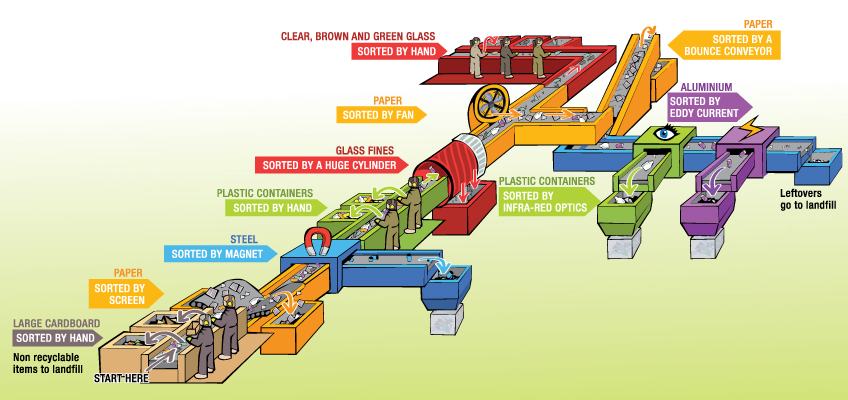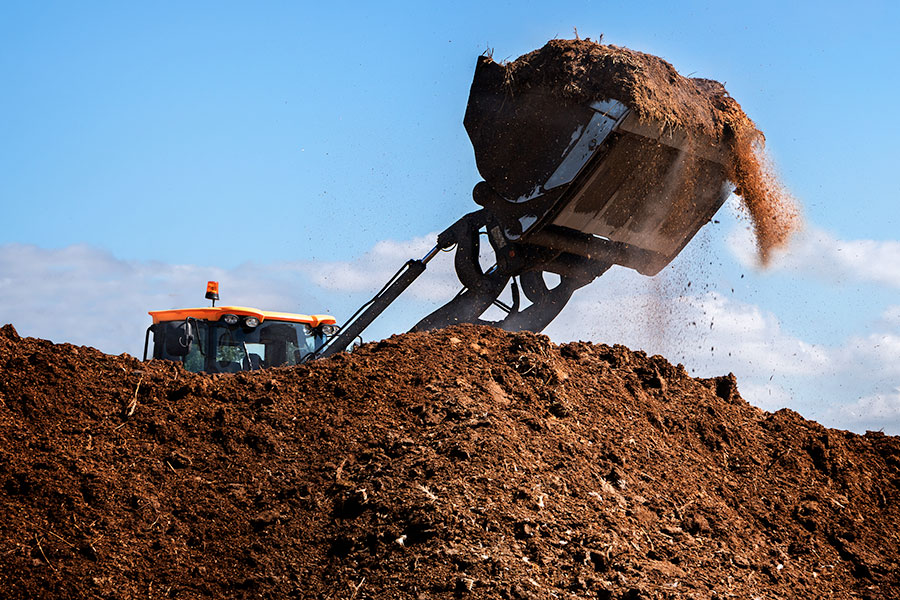What happens to my waste?
The garbage in the red lid bin is currently taken to Clyde rail head where it is compacted into containers and railed down to a big hole in the ground about half way between Goulburn and Canberra (Woodlawn Bioreactor). The hole was left behind by a zinc, copper and lead mine, and since 2004 Veolia has been working to turn the contaminated site into one of Australia’s premier green energy facilities.
At Woodlawn our waste is processed in a way that maximises the production of biogas. This is used to generate electricity, and in the last 10 years over four million tonnes of waste has been turned into 34.5 million cubic metres of methane. The site currently exports enough power to meet the needs of over 6,000 homes per annum.
As significant as the bioreactor’s 6MW of electricity generation is, since 2011 it has been overshadowed by the output of 23 turbines generating 48.3MW, enough power to meet the needs of 23,000 homes.
Generating electricity produces a lot of heat. Waste heat from the generators is used to warm water to just the right temperature to keep Barramundi happy. Woodlawn’s aquaculture facility produces 2.5 tonnes of this highly sought after fish.
The recycling in the yellow bin is currently taken to the Cleanaway Materials Recovery Facility (MRF) at Rooty Hill where it is sorted.
Who sorts the recycling?
The truck unloads unsorted recycling (paper, plastics, glass, etc) onto conveyor belts and then the sorting process begins. Air jets are used to separate paper, regular magnets are used to pick up steel cans, eddie current magnets are used to repel aluminium into containers, while lasers identify and sort glass into different types and colours. Other materials are sorted by hand, such as items too contaminated for recycling (for instance plastic bags, large pieces of cardboard).
Once sorted, the materials are sent to specialist recycling plants.
What happens next?
Materials are treated and the resources are recovered in a number of different ways:
Glass bottles and jars
Glass is stockpiled and transported to a glass beneficiation plant where the glass is scanned for any impurities and carefully sorted to remove items such as pyrex, ceramics, china, bone, oven proof glass and any other products that will not melt down. Once melted down, the sorted glass is mixed with cullet (crushed glass) for remoulding back into the new bottles and jars. Glass can take up to 1000 years to breakdown in landfill but recycling glass only requires only 40 per cent of the energy necessary to make glass from sand.
Steel cans
Steel tins are baled and sold to recyclers to be remade into steel products and packaging. Steel is ‘detinned’ to remove the thin layer of tin and is then heated using a furnace and mixed with other recycled scrap metal.
The melted product is then poured into casters to make ingots. Steel is 100 per cent recyclable so these recycled steel ingots can be used to make new car bodies, cans, aerosols, bikes, BBQs, furniture and whitegoods.
Aluminium cans
Aluminium cans and aerosols are baled and sent to a processing plant, where they are heated and melted in a furnace.
The liquid metal is cast into ingots that are then rolled into sheets in a mill and sent to the manufactures to be made back into aluminium products such as can, aerosols, bikes, cars and even planes. Recycled aluminium is just as good quality as aluminium made straight from bauxite and is more environmentally friendly.
Paper and cardboard
Baled paper and cardboard is delivered to Visy’s recycling plant where it is shredded and mixed with water at high speed to create paper fibres. The pulp is passed through cleaning and screening equipment to remove plastic, dirt and staples and then heated to remove ink and glue and is treated with chemicals and heated to loosen the ink. The cleaned pulp is diluted with water and mixed with smaller amounts of paper making additives.
The paper is then turned into new paper and cardboard products. Recycled paper and cardboard can be used to make packaging, industrial paper, tissues, newspapers, insulations, kitty litter and moulded cartons for eggs and fruit.
Plastic containers
Plastic is baled and sent to recycling plants where it is shredded into small pieces and then washed. A floatation process separates plastics that may be mixed together due to lids being left on the products. Plastic is melted and stretched into strands, cooled, and cut into pellets or ground into powder. The plastic pellets and powders are sent to manufactures to be moulded and cast back into plastic products and packaging. Recycled plastic is used to make new bottles and containers, wheelie bins, guideposts, fence pickets, irrigation pipes and fleece jumpers.

Green waste is currently delivered to Kimbriki Recycling and Waste Disposal Centre in Terrey Hills, where it is screened and processed by Australian Native Landscapes. It is mulched using a mechanical shredder and then composted to the Australian Standard. Processed compost and mulch is matured for 3-6 months before being sold to the public.

Council now collects all Accepted bulky waste in a single waste stream from the kerbside.
Your bulky waste will go to a resource recovery centre where metals, wood and mattresses will be recovered for recycling.
All of the remaining residual waste then goes to landfill.
Placing items out for bulky waste disposal should be your last resort, as most of this material ends up in landfill.
Council encourages residents to first consider garage sales, online sales, charitable donations and repairing or repurposing items before placing items out for bulky collections.
Refer to the Where Does my Bulky Waste go page for more information.







